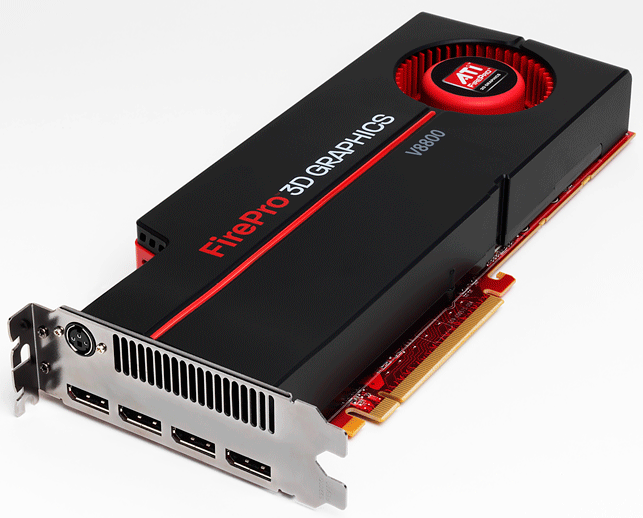High-end in the extreme is the best way to describe AMD ‘s brand new professional 3D graphics card, the ATI FirePro V8800, the details of which were released this week.
This is a hugely powerful workstation-class board, which in addition to setting new records in 3D graphics benchmarks boasts a number of features that have the potential to transform the way we work with multiple monitors or explore digital mockups on powerwalls.
On paper, and in the flesh, the ATI FirePro V8800 is a beast. The double height board features 2GB of high bandwidth GDDR5 memory and boasts a total of 1,600 stream processors. All of this requires a significant amount of power and the card consumes up to 225W, which is at the top end for professional graphics. Power is drawn through the PCI Express slot but two additional power cables are also required. These are connected direct to the workstation’s power supply, which in many cases will need to be 1000W units.
Multi-monitor
The card boasts a total of four DisplayPort connectors, which is a first for a professional 3D card. As DisplayPort is a relatively new interface designed specifically for hi-res displays, an adapter for DVI displays is included in the box. For VGA monitors the adapter is a cost option.
With four DisplayPorts as standard the card can drive up to four independent 30-inch displays at resolutions up to 2,560 x 1,600, either as one extended desktop or as independent displays. For designers and engineers that commonly use a variety of applications concurrently, that’s an awful lot of valuable desktop space.
The technology that supports these multiple monitors is called Eyefinity and while we have yet to test it out – primarily because we didn’t have enough displays to hand – we have talked to customers who have used the technology and swear by it. Kirkham Motorsports, a manufacturer of aluminium-bodied Roadster cars, has been testing the FirePro V8800 prior to launch and uses three monitors side by side.
SolidWorks is run on the main 37-inch display, with SurfCAM on a second 23-inch screen and live video from webcams used to monitor its shop floor CNC machines on a third. Previously, in order to support this amount of monitors, Kirkham had to use multiple graphics cards in a single machine, which according to Steve Kirkham often caused problems.

With its four DisplayPort connectors, the ATI FirePro V8800 can support up to four high resolution displays up to 2,560 x 1,600 resolution. That’s an incredible amount of desktop space for running concurrent 3D applications






